-
Posts
395 -
Joined
-
Last visited
Content Type
Profiles
Forums
Events
Store
Downloads
Gallery
Posts posted by francois2605
-
-
I personally don't really care about papers but I believe they may increase your chances for reselling as some buyers will only buy papered items and others will find it reassuring to have a paper confirming that a piece is genuine.
I sometimes buy from Aoi Arts and I asked them twice to submit a sword to shinsa for me. The cost is modest (around 250 EUR) and since the item is already in Japan, you don't have the hassle of shipping the item overseas, paying an agent for the paperwork. The downside is that you usually need to wait several weeks or months but I'm fine with that.
-
 2
2
-
 3
3
-
-
No idea, Dave, the sword is mumei
-
-
Congrats Colin and thanks for sharing your story.
Will you share some pics ?

-
 1
1
-
-
3 of the pictures shown in this thread come from this Yakiba's page: https://yakiba.com/kanehide-nakata/.
If you look at the Yakiba's sword description, you'll see that the sword comes with a shirasaya, not a koshirae.
I'm a bit confused. Are those 6 pictures from the same sword ? I'd say no.
Even the paint on the nakago is different:

-
 1
1
-
 1
1
-
-
Have you read this yet ?
Exporting a weapon out of Japan is a long and tedious process Buyee doesn't want to be involved in hence the restrictions you're encountering.
The usual solution is to use a local agent who will do the paperwork for you but this has a cost (around 20% of the item if memory serves me).
-
-
-
7 hours ago, waljamada said:
Brano,
What mm macro lense do you use? 24mm?
You need to use a macro lens (with a minimal focus distance which is key), mine is a 100mm. You can also use tubes like these ones to boost the magnification factor.
-
Brano, those pictures are gorgeous. You really nailed it
-
-
The seller must be in dire straits to sell a katana his grandfather reportedly took from a Japanese soldier. I can't think of any other reason why someone would sell such heirloom.
That or the story is fake.
-
From Swordsmiths of Japan A-Z:
QuoteNOBUIE (信屋), Meireki (明暦, 1655-1658), Owari – “Bishū-jū Fujiwara Nobuie” (尾州住藤原信屋), “Izumi no Kami Fujiwara Nobuie” (和泉守藤原信屋), he signed his name first with the characters (信家) but changed them with receiving the honorary title Izumi no Kami to (信屋), he was a student of the 2nd gen. Nobutaka (信高), he also worked in Kyōto and changed his name in later years once more, to Nobuhiro (信広), chūjō-saku
Another match for "Fujiwara Nobuie":
QuoteNOBUIE (信舎), Keichō (慶長, 1596-1615), Shinano – “Nobuie” (信舎), Fujiwara Nobuie” (藤原信舎), “Hitachi no Kami Fujiwara Nobuie saku Kōshū-jū” (常陸守藤原信舎作甲州住), “Hitachi no Kami Fujiwara Nobuie saku Shinshū- jū” (常陸守藤原信舎作信州住), “Shinshū Suwa-jū Fujiwara Nobuie” (信州諏訪住藤原信舎), “Shinshū Suwa-jū Tan Fujiwara Nobuie Gentarō saku” (信州諏訪住丹藤原信舎源太郎作), real name Kawamura Gentarō (河村源太郎), he came originally from Mino ́s Seki where he belonged to the local San ́ami school (三阿弥), later he moved to Kai province and moved once more to Suwa (諏訪) in Shinano province, a dated blade from the twelfth month of the twelfth year of Keichō (1607) that mentions Shinano shows us that the moving to Suwa did take place at the latest at that time, but there exists another blade with the date signature of the first year of Kan ́ei (寛永, 1624) which bears the prefix “Ōshū-jū” (奥州住), this blade was an offering to the deity Suwa-myōjin (諏訪明神) but this deity was primarily worshipped in Shinano ́s Suwa-taisha (諏訪大社) so the suffix “resident of Ōshū,” i.e. Mutsu province, is somewhat unclear in this respect, maybe he made the blade to be offered to the Shinano-located Suwa-taisha whilst working in Ōshū for a while, we know date signatures from the Tenshō era (天正, 1573-1592) to the first year of Kan ́ei (1624), chū- saku – There exists the theory that he was the same smith as the Kaneie (兼舎) who had received the character for “Shin” (信) from Takeda Shingen (武田信玄, 1521-1573) whereupon Kaneie had changed his name to Nobuie (信舎, “Nobu” is the Sino-Japanese reading of “Shin”). See also “KANEIE (兼舎), 1st gen., Tenshō (天正, 1573-1592), Mino/ Shinano/Kai”
-
 1
1
-
-
FYI Aoi Arts just shipped a katana with EMS without asking me to pay extra shipping fees.
-
For me, the key to take good pictures of a sword is to avoid any direct source of light and rely on the ambiant light (to prevent reflections). You'll be able to see things you can't see with your own eyes.
Those are pictures I shot with a tripod and a macro (100 mm) lens.
Ikkansai Shigemasa
Minamoto Moritaka
Fujiwara Kanefusa 25th
Tsukamoto Okimasa
-
 3
3
-
 1
1
-
 1
1
-
 1
1
-
-
Very nice pictures, Jonathan. Thanks for sharing

-
 1
1
-
-
Your sword comes with green papers which aren't considered reliable and therefore worthless today. Search "green papers" on the forum and you'll find plenty of discussions about them and why they're no longer trusted. Here's one such instance from January:
Another thread where papers are discussed and why green ones are no longer trusted:
Your sword was initially sold by showa22, regulars on the forum can immediately tell just by looking at the pictures without even clicking on the eBay link. Likewise, search his name on the forum where you'll be able to read opinions about this seller.
-
 1
1
-
-
I had a similar issue with a gunto and after thinking about it realized that the seppa had not been put back by the previous owner in the correct order. Swapping the seppa fixed the issue for me
-
 1
1
-
-
Steve, since you're into gendaito, have you considered buying "An Oshigata Book of Modern Swordsmiths 1868-1945" by Slough ?
This book would probably answer a lot of your questions, is out of print but there's one currently on sale on the forum:
This is the entry for KANEMASA
Redirecting to those 2 pages
-
 1
1
-
-
Quote
shingane (心鉄・心金) – Lit. “core steel.” Steel with a lower
carbon content used for certain sword constructions which require
a sofer core combined with other steels, for example kōbuse-gitae.
I think you're confusing shingane with umegane
Quoteumegane (埋金) – When blisters of fukure (pockets of air in the steel that were not forced out during the forging process) break and leave a cavity of a certain size, it might be repaired by inserting steel. These steel patches are called umegane (lit. “fill-up steel”). However, as more material has to be removed to insert the umegane, openings often get worse as rust is growing underneath and loosens the patch.
It's the repeated polishing of the kawagane which eventually exposes the shingane
-
In the Buyee interface, you get to choose how to describe the package via a drop down list. There's an entry "Antique" in the list.
If I remember correctly, you can do it upon choosing the shipping method
-
 1
1
-
-
The picture of the jihada really has the komonjo feel and doesn't look like a typical Japanese sword hada.
If the sword is supposed to be from Nakata Kanehide (2 million yen and high to superior-grade gendaito), the mei doesn't match. The 2 pages from John Slough's book about Kanehide for reference.
2 other Nakata Kanehide online at the moment:
* https://japanesesword.com/archived-pages/2017/9/14/star-stamp-gendaito-by-nakata-kanehide
-
I'm not an expert but...
Probably hira-zōgan, searching "inlay" in Markus Sesko's Encyclopedia of Japanese Swords returns the following definition.
Quotehira-zōgan (平象嵌) – Hira-zōgan describes, as the name implies (hira means “flat”), an inlay which is level with the surface of the ornamented piece. Representative of this technique is Kaga-zōgan (加賀象嵌) of Kaga-based craftsmen and the inlay of the Umetada School. It has to be noted that the zōgan inlay of the former group becomes level by polishing the entire surface, and that the hira-zōgan of the latter artists is not necessarily flat but raises somewhat from the surface. Hira-zōgan was especially applied from the middle Edo period onwards, but it was known since earliest times, like the shinchū-zōgan (真鍮象嵌, brass zōgan) from the end of the Muro- machi period, done by Kyōto artists like Yoshirō (与四郎) and the like.
Quotezōgan (象嵌) – Lit. “to inlay (gan/hameru, 嵌める) a shape/figure (zō/katachi, 象).” The latter character can also be written with (眼), but (嵌) is more common. With zōgan, a distinction is drawn between different techniques: suemon-, hira-, and nunome-zōgan, which are described in the following sections. Zōgan was either applied by the kinkō artist himself, or by a specialist craftsman called the zōgan-shi (象嵌師). These zōgan-shi were working independently for the first time during the early Edo period: for example, there was a group of craftsmen working in Kanazawa (金沢) in Kaga province which specialized in applying zōgan to stirrups (abumi, 鐙). The inlay can be done with a variety of techniques. In picture a below, the motif is forced with a hammer into a swallow-tail shaped groove opened on the ground plate. A similar method is shown in picture b, where the motif is bent in advance and forced in the same way into the groove. In picture c, the ground plate is opened with a chisel, leaving some material along the edges. Then the motif is inlayed to this opening, and the projecting edges are flattened with a spatula (hera, 箆) to fix the motif. Large-area motifs are usually inlayed with this technique, as shown in picture d, often used with depictions of the sun or the moon. The term zōgan is also used as a suffix, like in kin-zōgan (金象嵌) or gin-zōgan (銀象嵌), which describes gold or silver inlay respectively.
-
 2
2
-
-
It will probably be a lot of hassle to do the paperwork yourself.
From what I remember, the process can take up to a month that's why people usually pay local agents to do it for them but will this still be worth money-wise ?


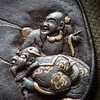
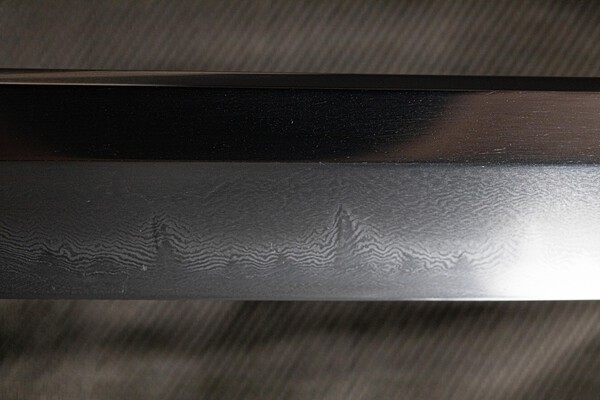
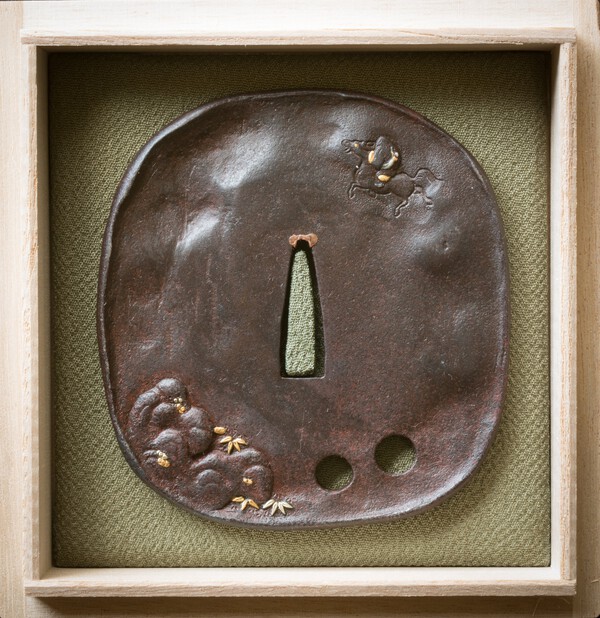
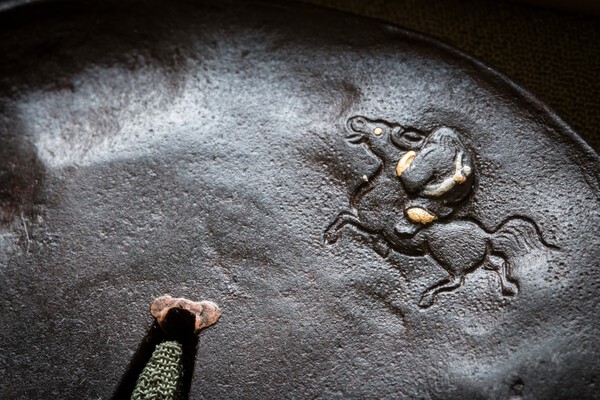
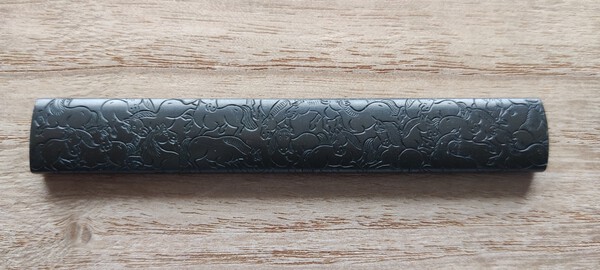
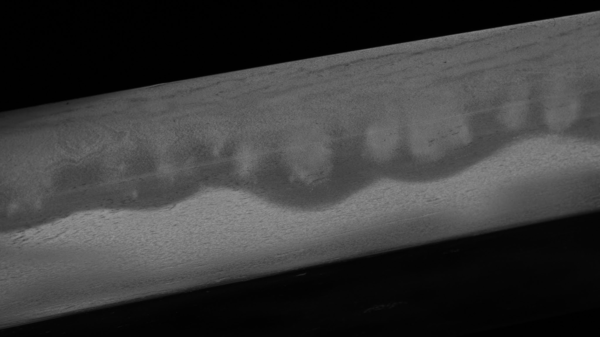
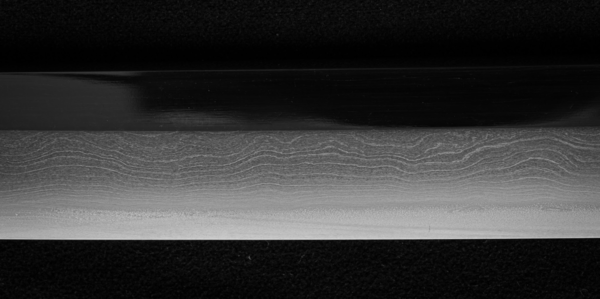
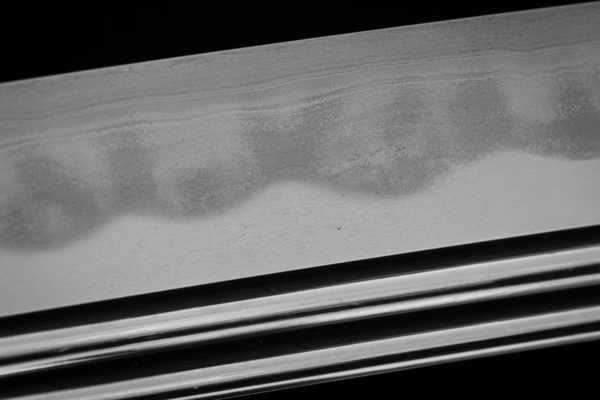
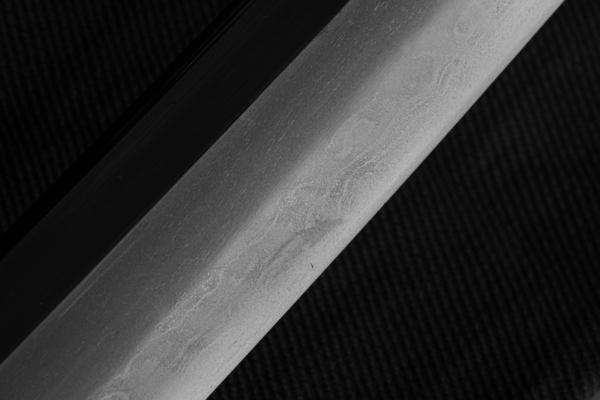
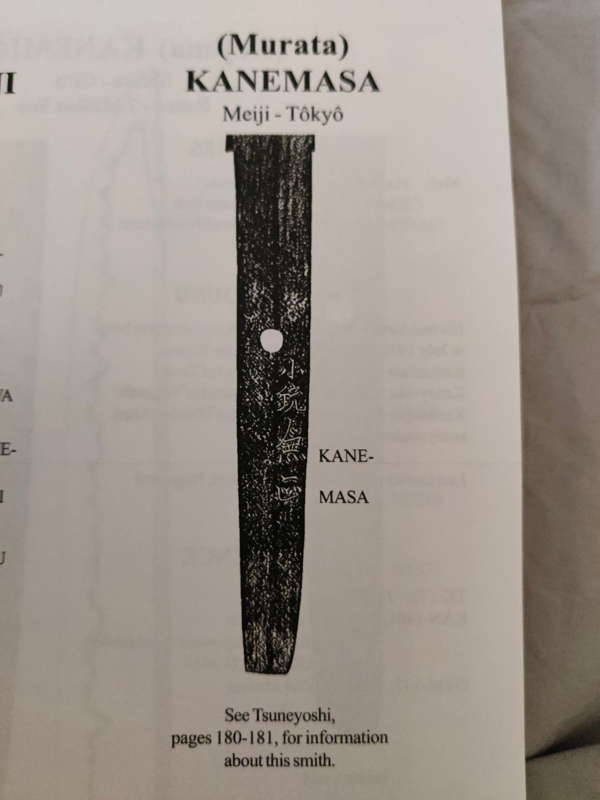
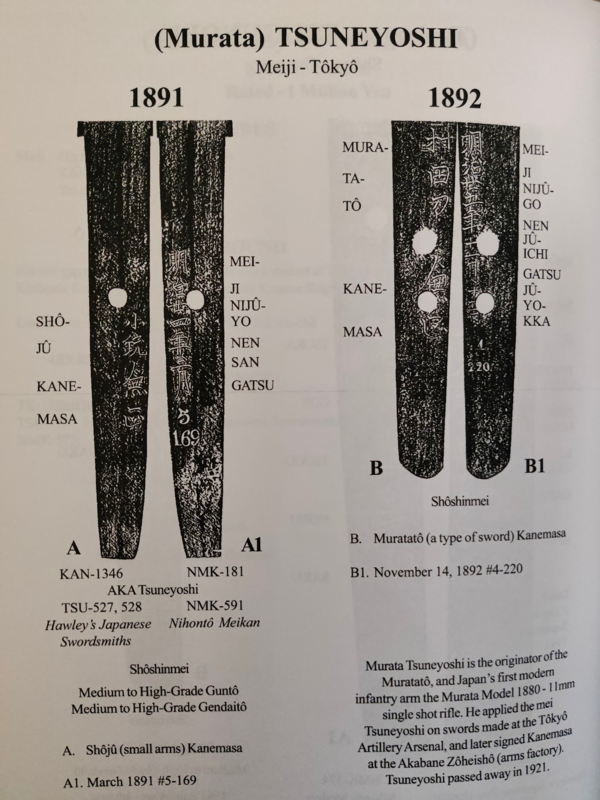
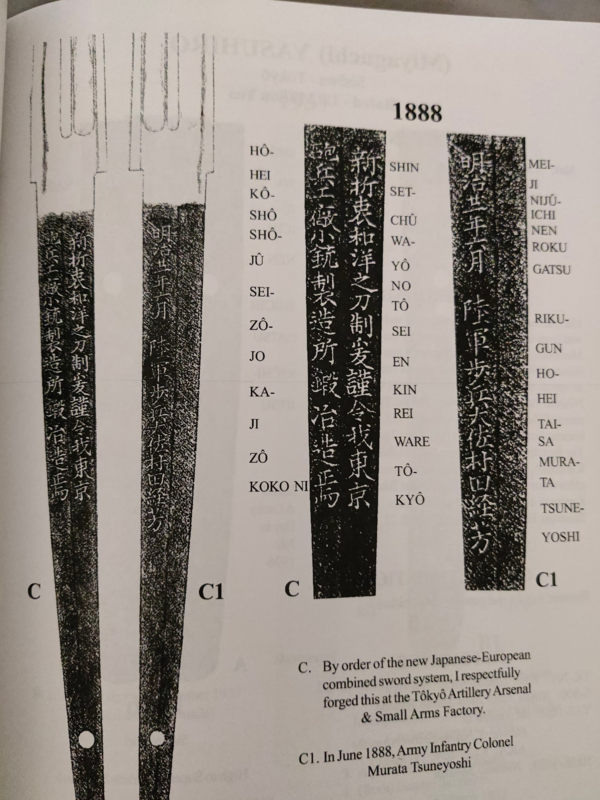
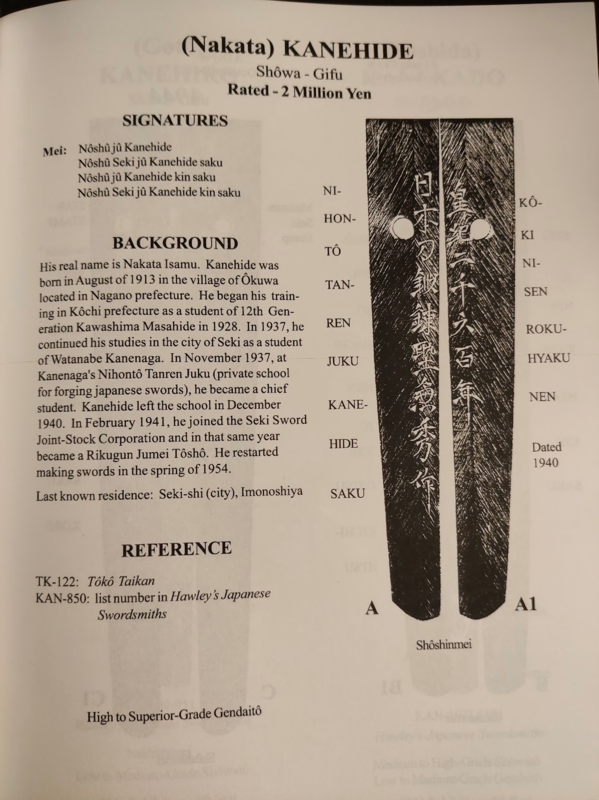
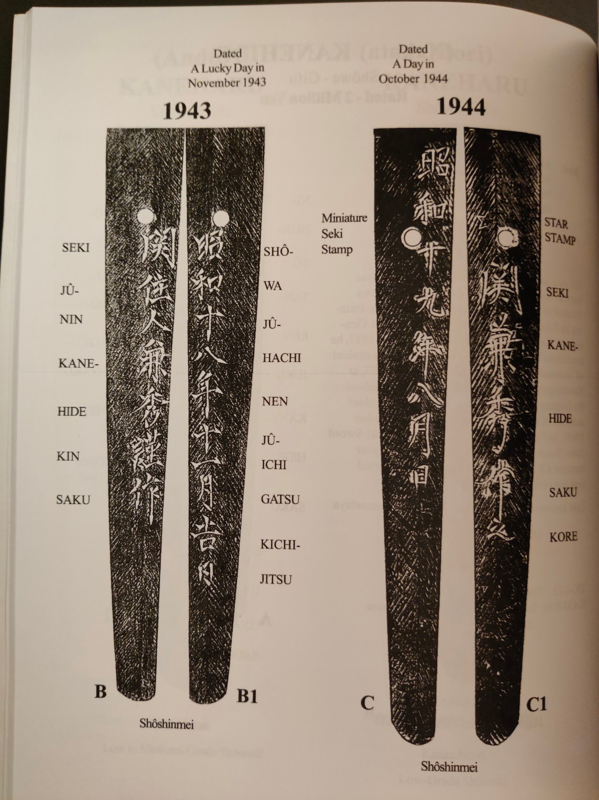
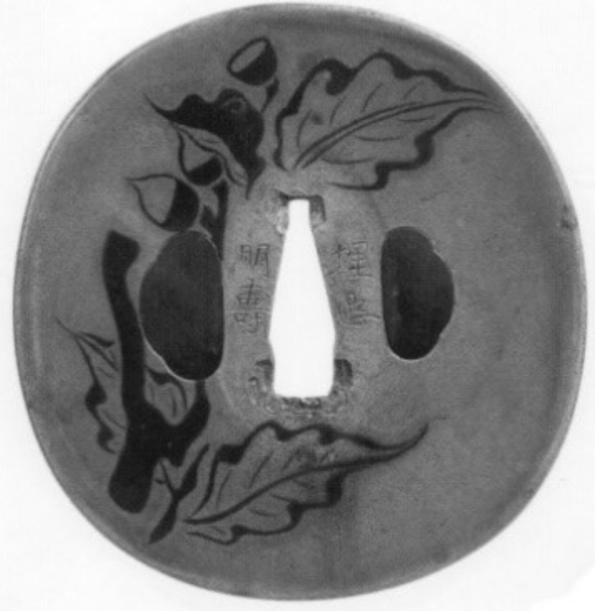
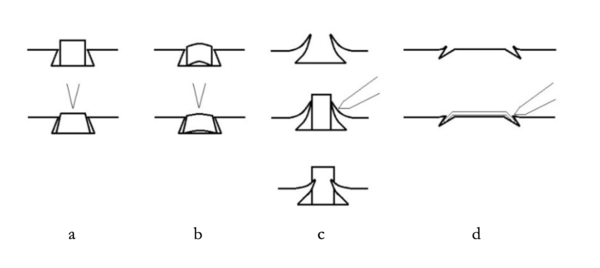
Fukuoka Ichimonji style Tachi with wonderful Juka-choji
in Nihonto
Posted
Excellent, thanks for sharing this beauty Marco
I have a similar tachi by Seto Yoshihiro forged in 1995, this swordsmith is really talented. The picture below has been heavily edited to see through the hadori.